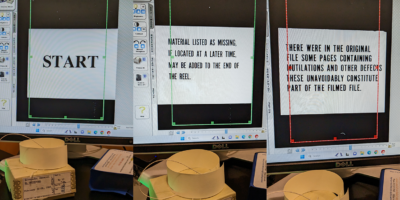By Ana Flavia Badue
Teaching about research is a great way of creating a classroom atmosphere guided by curiosity and questioning among our students. My other blog posts have focused on multiple ways of incorporating research into teaching: we can talk about our own research with students, we can introduce divergent perspectives elaborated by scholars so students can learn about the role of debating and questioning in producing knowledge, and we can propose research activities for them.
Here are some ideas and examples that worked well in my own experience and from my knowledge of different instructors’ approaches. The goal is that students become able to ask questions, develop interpretations based on evidence, and make decisions based on these interpretations.
Scaffolded individual research project
I have been teaching Introduction to Cultural Anthropology at Baruch College for six semesters, and I’ve learned that a final research paper requires scaffolding over the course of the full semester. The final assignment is a “mini-ethnographic paper”, in which students combine their own ethnographic observations with the readings of the course. My goal is that they use anthropological scholarship and critical perspectives about social, economic, political and cultural relations to denaturalize what is familiar to them, and to interpret quotidian events.
Here is the sequence of assignments I use in my course:
a) A 1000-word paper with a description of a place or a region the student usually goes. It can be a religious temple, a commute, a neighborhood, or event from students’ own families.
b) A 2000-word paper with new observations that takes into account larger questions that come out of from the previous assignment.
c) A 2500-word essay in which they combine the second and third assignment, and add concepts and ideas of two more authors.
In class, I always give students some time to share their findings with their colleagues and to give and receive oral feedback. This assignment sequence is productive for two main reasons. First, students can envision their own change of perspective throughout the semester by writing about the same setting several different times. Second, it promotes a curious gaze about the world that surrounds us, because it can be analyzed in multiple ways and it is subject to interpretation and change.
Collaborative research
An alternative to conducting an individual research project is to ask students to conduct a collaborative one. I taught in a community college in Brazil for a couple of years before coming to the U.S. There, I conducted many group activities and I’ve developed some strategies to facilitate collaboration and collective work. In a course called Brazilian Politics and Society, I proposed a collective research project to understand how history is also made in the everyday. My students had to interview, individually, family members who lived during the military regime (1964-1988). I asked the students to individually write an essay in which they transcribed passages of their interviews and combined these passages with the content we had discussed in class. After that, they worked in groups, sharing their essays in order to find common themes, topics or narratives. The final group product was a text or a video in which they collectively organized and analyzed the material. As in individual research, scaffolding is essential to show students that learning is a process and that they can learn by putting different thoughts together, analyzing and questioning, rather than memorizing and looking for the right answer.
Students participate in the instructor’s research
When the instructor is conducting a research project, a good pedagogical strategy can be to invite students to participate in it. There are multiple ways of doing so. First, one can introduce the students to the main research questions, and ask them to decide which data would respond to the questions and which methods would be appropriate. Then, they can design forms of gathering data.
An alternative is to bring data from our own research so students can analyze them. This is what Professor Christina Zarcadoolas from Hunter College does in her methods class on linguistic techniques. The instructor uses portions of the qualitative data collected from her and collaborators in 2016, and that were part of a research project entitled “Maternal-Child Verbal Interaction Research Study: Talking with your child – helping them develop”. The project won the 2016 Idea Grant Competition. You can find this and other winners with excellent ideas here!
Each of the three strategies presented here has benefits and downsides, and they can be employed depending on one’s pedagogic goals. Individual research has the benefits of giving autonomy to students, and of enabling them to take all the steps that a research process requires. But those of us who teach introductory courses know that sometimes a semester may not be enough time to teach students to produce a research question plus to develop a whole research project in response. A collaborative research project not only gives students autonomy to conduct their own research and elaborate their methods, but it also teaches them how to work in groups. The difficulty in this strategy is to design clear instructions and to offer support to the groups. Asking students to partake in research that was elaborated by the instructor is a way of focusing on methods, data collection and analysis. This is the best strategy for methods courses, when the focus is less on elaborating the questions and more on the steps necessary to investigate them. But if one asks students to collect data on a pre-set topic, this method risks students not feeling connected to the research question. Further, it is vital that the instructor does not use students as free labor, and frames the research as a pedagogical tool.
Given the benefits and downsides of each method, consider why you think that research is important to your students and the skills you want to foster. Then try out one or more of these methods!










Leave a Reply